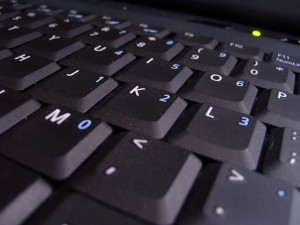Why Everyone isn’t Connected in a Wired D.C.
D.C.’s digital divide is no longer about lack of access to high-speed Internet — it’s about people not signing up, a new study finds.
An American University Investigative Reporting Workshop study, published Thursday, shows that although nearly all of D.C. is wired for high-speed Internet access, there are entire neighborhoods with extremely low adoption rates, meaning very few households are signed up for service. John Dunbar, the study’s author, says the District’s “very deep” divide “absolutely has to do with wealth.”
“If you have a low income, you just don’t subscribe,” he says. “If you look at the city, it’s an adoption divide. It’s really obvious and it’s really disturbing.”
The study breaks down broadband adoption rates by Census tract, rating connectivity on an ascending scale of 1 to 5. An interactive map (see below) details connection rates, Internet providers and income levels for each Census tract:
The least-connected D.C. neighborhoods are concentrated east of the Anacostia River, in low-income Census tracts. The adoption rates in some of those areas is rated at 1, meaning less than 200 per every 1,000 households were connected to high-speed Internet. Parts of Ward 1, 4 and 5 also have very low adoption rates.
Computer ownership
Dunbar says that although the data doesn’t show whether people aren’t signing up for Internet access because they don’t own computers, it’s likely a major factor.
“Having a computer is critical. It’s definitely a barrier to access and it’s actually an interesting way to look at the access question,” he says. “[Computers] are a lot cheaper than they used to be, but that monthly cost [of Internet access] is the real backbreaker.”
The metro region’s racial digital divide
Even when adjusted for income, the Hispanic population in the metro-area adopted at lower rates than the black and white populations, and that could be due to marketing or education, Dunbar says. “Is the reason they’re not getting broadband service because they’re not educated? Or is the problem that ‘we don’t have broadband service and therefore I’m not getting educated’?”
The government’s role
About 95 percent of the U.S. is wired for broadband service, but only 65 percent of the population actually subscribes. And that spurs many policy questions over how much the government should intervene, Dunbar says: Should the government subsidize the cost of signing up? Should it force carriers to set lower-cost price points?
The District has taken steps to make it easier for people to connect. Using federal stimulus money, city is installing fiber optic cables in under-served wards. The hope is that high-speed Internet carriers will then provide low-cost and faster service to residents and businesses. But whether people will actually subscribe may depend on just how cheap the service will be, Dunbar says.






